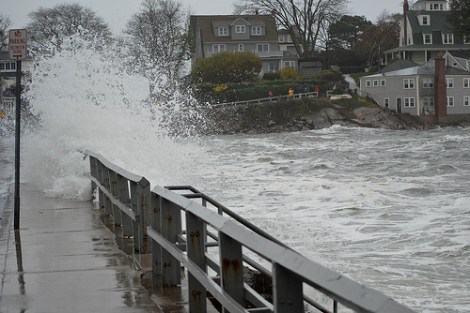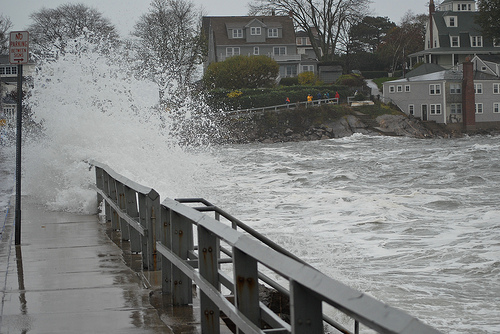A bit of unexpected news: The cost of global disasters went down in 2012, not up.
That’s according to re-insurer Swiss Re — an insurance company that insures insurers. (It’s insurance all the way down.) And you can put faith in the numbers Swiss Re came up with; few industries have as much at risk as the insurance industry.
From The Huffington Post:
According to a report released Wednesday by reinsurer Swiss Re, total economic losses from disasters — naturally occurring or otherwise — is estimated to be at least $140 billion. …
Even with the costs of Sandy, the second-most expensive storm in U.S. history after Hurricane Katrina, the total financial loss from disasters this year did not near 2011’s total of $380 billion — the highest in history — or 2010’s $218 billion.
The cost of disasters in 2011 may have been bolstered by the substantial losses associated with the earthquake and tsunami in Japan. This year, the top five most expensive disasters all occurred in the U.S.

Brian BirkeCheaper than it looks, I guess.
Swiss Re notes in its report that 2012 was a particularly expensive year for American disasters.
2012 is dominated by large, weather-related losses in the US. Moreover, the top five insured loss events are all in the US. Hurricane Sandy is the largest Atlantic hurricane on record in terms of wind span. This record storm surge caused widespread flooding and damage to a densely populated area on the East Coast of the US. It also led to the worst power outage caused by a natural catastrophe in the history of the US. …
In addition, extremely dry weather conditions and limited snowfall in the US led to one of the worst droughts in recent decades, affecting more than half of the country. Drought-related agricultural losses are likely to reach approximately USD 11 billion, including pay-outs from federal assistance programs.
Swiss Re notes that the amount of insurance claims in the United States is subject to “a high degree of uncertainty, as it is still too soon to gauge the final overall damage.”
But it’s not too soon for our Republican friends on Capitol Hill. They already know that the $60 billion Obama requested for Sandy is just way too much. They’re thinking more like … 24? From Reuters:
The far smaller initial amount is one of a number of Republican amendments aimed at cutting projects from a bill that they see as a “slush fund” loaded with questionable requests for spending on unrelated programs and big infrastructure.
Senator Daniel Coats of Indiana said his plan for $23.8 billion in initial funding would provide sufficient money for immediate needs through March 27, for work such as debris cleanup, repairing damaged equipment, rebuilding destroyed homes and businesses.
“It seems to me the most logical, responsible way to move forward is to identify the immediate needs and provide the immediate funding to meet those needs,” said Coats, a member of the Senate Appropriations Committee.
I mean, can you believe that the president and governors of affected states want money that could actually prevent the sort of damage that rang up such a big bill in the first place? It’s corruption, probably, wanting to ensure that inevitable future storms don’t shut down major cities for a week and kill dozens of people.
What we should probably do is put Senate Republicans in charge of the financial response to every major storm, worldwide. Take insurance companies out of the picture. Then year after year, the cost of global disasters will drop. Maybe we can even turn a profit on them, who knows? The point is that climate change is not real and preparing for it is a waste of money.
No matter how much the insurance industry begs to differ.




